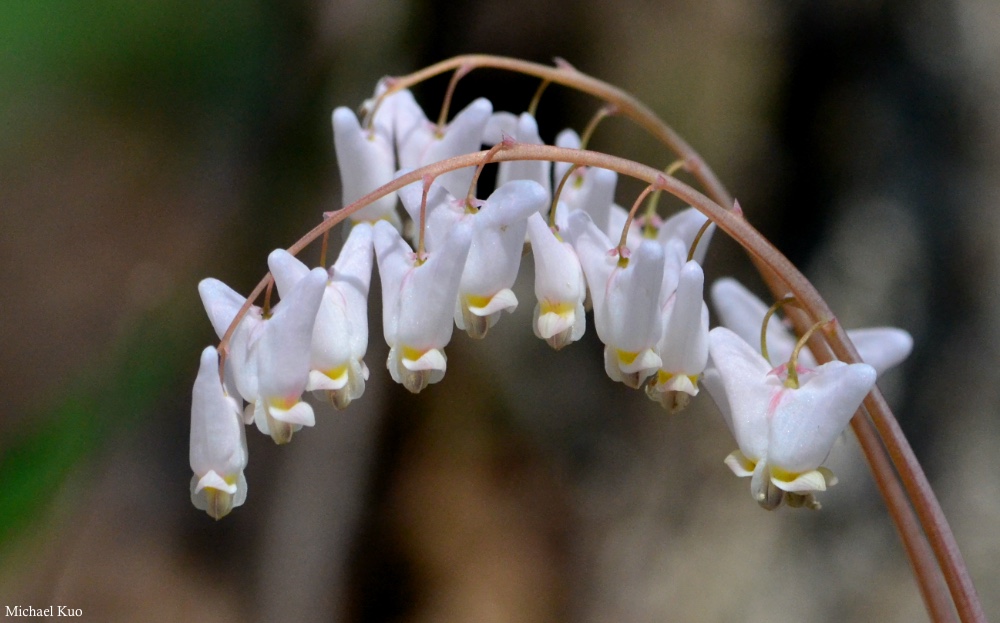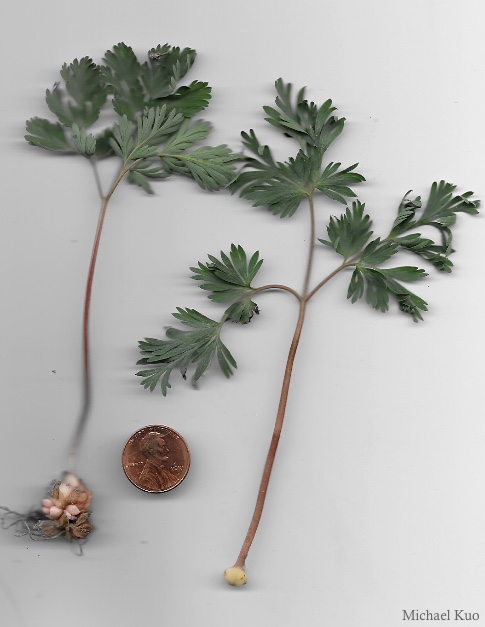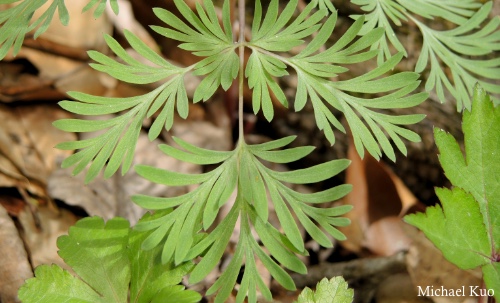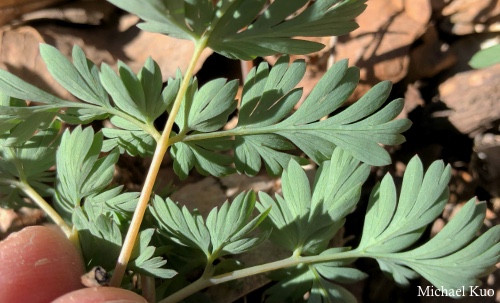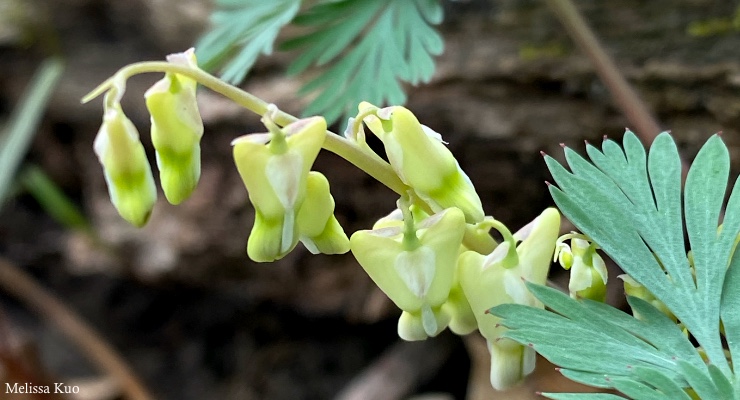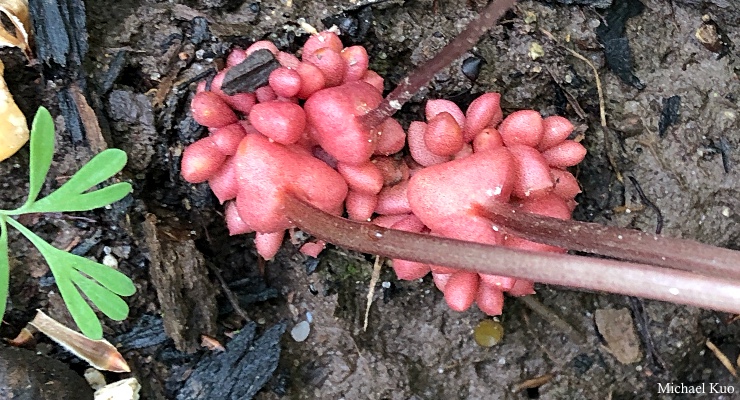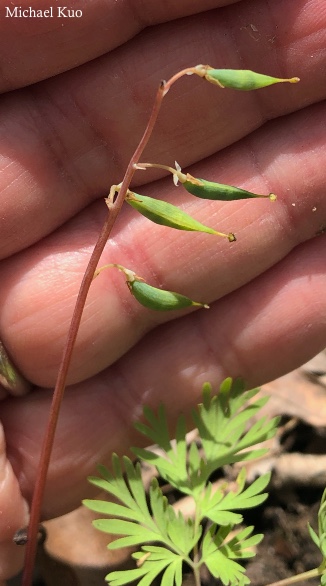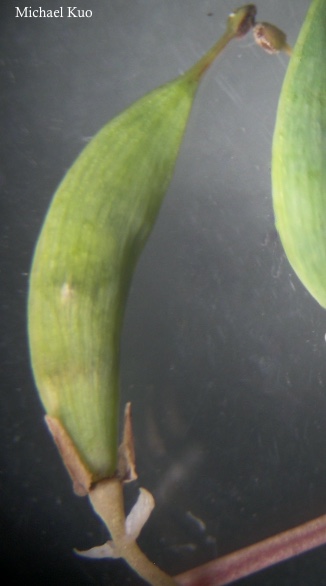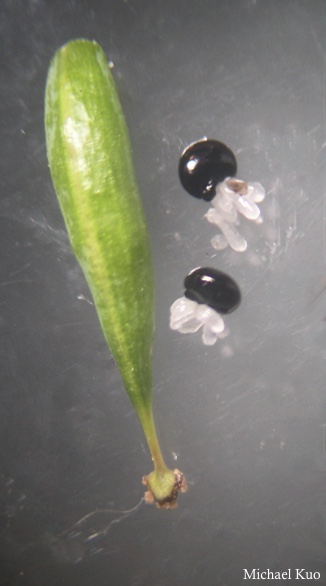 Dicentra cucullaria (Dutchman's breeches) |

|
|
Dicentra cucullaria is a well-known Midwestern spring flower, found in low lying, wet areas from March to May, depending on latitude. The delicate, lacy foliage is distinctive, as are the amazing white and yellow flowers that look a little like old-fashioned Volendam worker pants—the "Dutchman's breeches" of the plant's common name—although one wonders whether the "Dutchman" is hanging upside down or standing right-side-up. At any rate, the oddly shaped flower is especially attractive and accessible to long-tongued bees (including honeybees and bumblebees); it features two large, white petals, and two small, yellowish, recurved petals. "Squirrel corn" (Dicentra canadensis) is a similar plant that is also found in the Midwest, usually appearing a few weeks later than Dutchman's breeches. Its flowers are shaped more like swollen hearts and less like Dutch worker pants, and it has a sweet odor. |
 midwestern range |
|
|
|
|
|
|
|
|
|
|
|
|
|
References: GN Jones 1971, Kricher & Morrison 1988, RL Jones 2005, Voss & Reznicek 2012, Kurz 2014, Mohlenbrock 2014, Hilty 2020, USDA 2020. Kuo, Michael & Melissa Kuo (May, 2020). Dicentra cucullaria (Dutchman's breeches). Retrieved from the midwestnaturalist.com website: www.midwestnaturalist.com/dicentra_cucullaria.html All text and images © , midwestnaturalist.com. |
